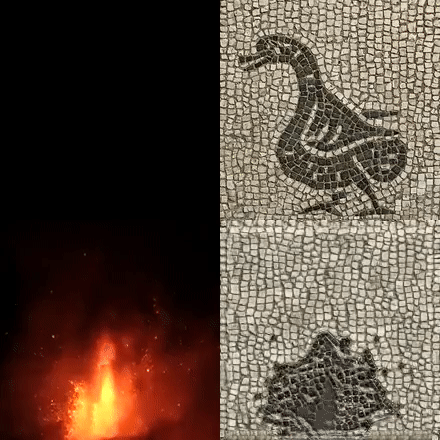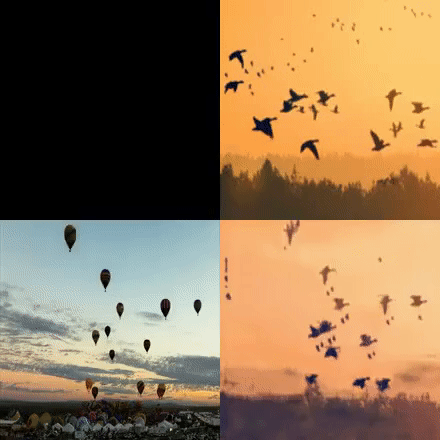Pytorch implementation for the paper "Structural-analogy from a Single Image Pair".
Abstract: The task of unsupervised image-to-image translation has seen substantial advancements in recent years through the use of deep neural networks. Typically, the proposed solutions learn the characterizing distribution of two large, unpaired collections of images, and are able to alter the appearance of a given image, while keeping its geometry intact. In this paper, we explore the capabilities of neural networks to understand image structure given only a single pair of images, A and B. We seek to generate images that are structurally aligned: that is, to generate an image that keeps the appearance and style of B, but has a structural arrangement that corresponds to A. The key idea is to map between image patches at different scales. This enables controlling the granularity at which analogies are produced, which determines the conceptual distinction between style and content. In addition to structural alignment, our method can be used to generate high quality imagery in other conditional generation tasks utilizing images A and B only: guided image synthesis, style and texture transfer, text translation as well as video translation.
For more details, please refer to the Project Webpage.
Python 3.7, Pytorch 1.4.0, argparse, Pillow 7.0.0, Scipy 1.4.1, skimage 0.16.2, numpy
You can train using the following command:
python train.py --input_a ./images/208.jpg --input_b ./images/209.jpg --gpu_id 0 --out ./output0/ --beta 10.0 --alpha 1.0
For other images, just replace input_a and input_b.
In many cases it is possible to improve results quality using the one of the following hyperparameter change:
--beta 10.0
--min_size 25
In some cases, the quality of the result can be improved using refinement. You can refine your results using SinGAN in the following way: Let "ab.png" the image that we want to refine using the original image "b.png" (i.e. "ab.png" should have the same patch distribution as "b.png"). First clone SinGAN repository
git clone https://github.com/tamarott/SinGAN
Then train a SinGAN network with "b.png" as input
python main_train.py --input_dir ./ --input_name b.png
You can refine using the command:
python paint2image.py --input_dir ./ --input_name b.png --ref_dir ./ --ref_name ab.png --paint_start_scale 4
Where paint_start_scale is a hyperparameter, and it is recommended to try several values.
More details about SinGAN implementation can be found at the repository.
Soon
python train.py --input_a ./images/108.png --input_b ./images/109.png --gpu_id 0 --out ./output3/ --beta 10.0 --alpha 1.0 --min_size 25
Soon
python train.py --input_a ./images/8.png --input_b ./images/9.png --gpu_id 0 --out ./output2/ --beta 10.0 --alpha 1.0
If you found this work useful, please cite.
@article{structuralanalogy2020,
author = {Sagie Benaim and
Ron Mokady and
Amit Bermano and
Daniel Cohen-Or and
Lior Wolf},
title = {Structural-analogy from a Single Image Pair},
journal = {CoRR},
volume = {abs/2004.02222},
year = {2020},
url = {https://arxiv.org/abs/2004.02222},
archivePrefix = {arXiv},
eprint = {2004.02222},
}
For further questions, ron.mokady@gmail.com or sagiebenaim@gmail.com.
This implementation is heavily based on https://github.com/tamarott/SinGAN.



